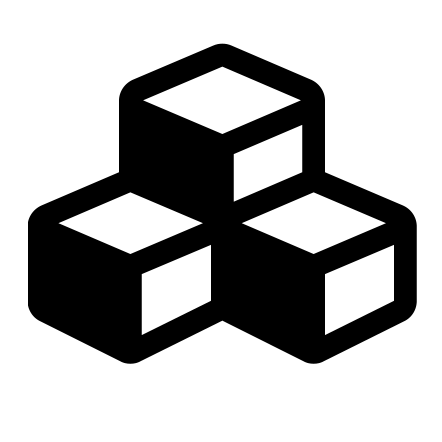Search Constraints
Filtering by:
Language
MATLAB
Remove constraint Language: MATLAB
Resource type
Collection
Remove constraint Resource type: Collection
1 - 2 of 2
Number of results to display per page
View results as:
Search Results
-
- Creator:
- Nunley, Hayden, Xue, Xufeng, Sun, Yubing, Resto-Irizarry, Agnes M, Yuan, Ye, Yong, Koh Meng Aw, Zheng, Yi, Weng, Shinuo, Shao, Yue, Studer, Lorenz, Fu, Jianping, and Lubensky, David K
- Description:
- In an earlier study (Xue et al. Nature Materials 2018), stem cells differentiated into one of two cell types, neural plate border (NPB) or neural plate (NP), in vitro with the NP forming a central circular domain. This previous study demonstrated that this differentiation is likely mechanics-guided. Part of this demonstration was measurements of the displacement of microposts under the cell layer as the cells differentiate. These measurements suggested that the NPB cells are more contractile than NP cells (see Dataset of cell layers on micro-patterned substrates compost of posts). The authors of the 2018 study and of a follow-up study further explored how the size of the NPB domain depends on experimental conditions (see Dataset of stem cell colonies differentiating in neural induction medium and code for analysis of resulting fate pattern). To further understand what factors could be driving NPB formation, we estimated cell area at the colony edge (see Dataset on cell areas and nuclear densities in differentiating stem cell colonies). This analysis inspired a mathematical model of mechanical patterning: fate affects cell contractility, and pressure in the cell layer biases fate. Cells at the colony edge, more contractile than cells at the center, seed a pattern that propagates via force transmission. We simulated the model in various cell geometries and for different substrates (see Code for simulating NP/NPB fate patterning in stem cell colonies). Strikingly, our model implies that the width of the outer fate domain varies non-monotonically with substrate stiffness, a prediction that we confirm experimentally. Our findings thus support the idea that mechanical stress can mediate patterning in the complete absence of chemical morphogens, even in non-motile cell layers, thus expanding the repertoire of possible roles for mechanical signals in development and morphogenesis.
- Keyword:
- Biomechanics, Cell communication, Cell mechanics, Developmental pattern formation, Force Sensing, and Vertebrate development
- Discipline:
- Science
4Works -
Defect patterns on the curved surface of fish retinae suggest a mechanism of cone mosaic formation
User Collection- Creator:
- Nunley, Hayden, Nagashima, Mikiko, Martin, Kamirah, Lorenzo Gonzalez, Alcides, Suzuki, Sachihiro C., Norton, Declan A., Wong, Rachel O. L., Raymond, Pamela A., and Lubensky, David K.
- Description:
- The outer epithelial layer of zebrafish retinae contains a crystalline array of cone photoreceptors, called the cone mosaic. As this mosaic grows by mitotic addition of new photoreceptors at the rim of the hemispheric retina, topological defects, called “Y-Junctions”, form to maintain approximately constant cell spacing. The generation of topological defects due to growth on a curved surface is a distinct feature of the cone mosaic not seen in other well-studied biological patterns like the R8 photoreceptor array in the _ Drosophila compound eye. Since defects can provide insight into cell-cell interactions responsible for pattern formation, here we characterize the arrangement of cones in individual Y-Junction cores (see Set of images for Figures 1 and 2 and 6 and Supplementary Figure 7) as well as the spatial distribution of Y-junctions across entire retinae (see Dataset for analyzing spatial distribution of Y-junctions in flat-mounted retinae). We find that for individual Y-junctions, the distribution of cones near the core corresponds closely to structures observed in physical crystals (see Set of images for Figures 1 and 2 and 6 and Supplementary Figure 7). In addition, Y-Junctions are organized into lines, called grain boundaries, from the retinal center to the periphery (see Dataset for analyzing spatial distribution of Y-junctions in flat-mounted retinae and Dataset for measuring tendency of Y-junctions to line up into grain boundaries during incorporation into retinae). In physical crystals, regardless of the initial distribution of defects, defects can coalesce into grain boundaries via the mobility of individual particles. By imaging in live fish, we demonstrate that grain boundaries in the cone mosaic instead appear during initial mosaic formation, without requiring defect motion (see Dataset for measuring tendency of Y-junctions to line up into grain boundaries during incorporation into retinae and Dataset for analyzing Y-junction motion in live fish retinae). Motivated by this observation, we show that a computational model of repulsive cell-cell interactions generates a mosaic with grain boundaries (see Code and example simulations of phase-field crystal model (for cone mosaic formation)). In contrast to paradigmatic models of fate specification in mostly motionless cell packings (see Code and accompanying input data for simulating lateral inhibition on motionless cell packing), this finding emphasizes the role of cell motion, guided by cell-cell interactions during differentiation, in forming biological crystals. Such a route to the formation of regular patterns may be especially valuable in situations, like growth on a curved surface, where the resulting long-ranged, elastic, effective interactions between defects can help to group them into grain boundaries.
- Keyword:
- zebrafish cone mosaic, lattice vectors, topological defects, tissue patterning, grain boundaries, lateral inhibition, photoconversion, phase-field crystal model, and defect motion
- Discipline:
- Science
7Works
